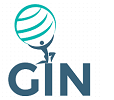Along with food and housing, good health is one of the
most critical aspects of a happy life. With the rapid surge in population, the
prevalence of various diseases has also increased, which, in turn, has raised
the demand for healthcare services around the globe. As a result, the healthcare industry is one of the most prosperous ones, especially in present times,
when the COVID-19 pandemic is raging on. Currently, the industry in Germany,
the U.S., France, the U.K., Japan, China, and Singapore is growing the fastest,
as these are some of the worst-affected nations by the coronavirus infection
and also because the healthcare spending
here is among the highest anywhere.
In 2019, the medical
sector of the U.S. was projected to reach $5,605.5 billion by 2024, but the
future size might actually be a lot larger. Even in the coming years, the
medical domain in this country is expected to grow the fastest, primarily due
to the high prevalence of chronic diseases. One in every six persons in the
U.S. has at least one chronic disease, as per the Centers for Disease Control
and Prevention (CDC). In the coming years, the prevalence of cancer, in
particular, is expected to surge sharply here, which would lead to a high
footfall at hospitals and diagnostic centers.
For a better understanding of the worldwide healthcare
ecosystem, it can be segregated in several ways. For instance, if disease is
considered, the entire industry could be broken down into cancer,
cardiovascular and circulatory diseases, neuropsychiatric disorders, chronic
respiratory diseases (CRD), diabetes, blood, and endocrine disorders, chronic
liver diseases, and musculoskeletal disorders. Due to their death toll being
the highest, around 17.9 million annually, as per the World Health
Organization, the treatment of cardiovascular and circulatory diseases contributes
the most to the healthcare sector around the world, including Germany.
Similarly, the healthcare industry could also
be seen in terms of the imaging equipment used, since they are essential to
diagnosing diseases and tracking the effect of treatment. Ultrasound devices,
X-ray machines, computed tomography (CT) scanners, magnetic resonance imaging
(MRI) systems, endoscopes, and mammography equipment are widely used at
hospitals and diagnostic centers around the world. In Singapore’s case,
specifically, X-ray machines are the most widely procured medical imaging equipment;
by 2024, the country’s healthcare settings are cumulatively expected to have
7,000 X-ray machines.
Thus, as the burden of diseases increases around the
world, the need for healthcare will become even dire.
Read more:
https://www.psmarketresearch.com/market-analysis/healthcare-ecosystem-insights





















